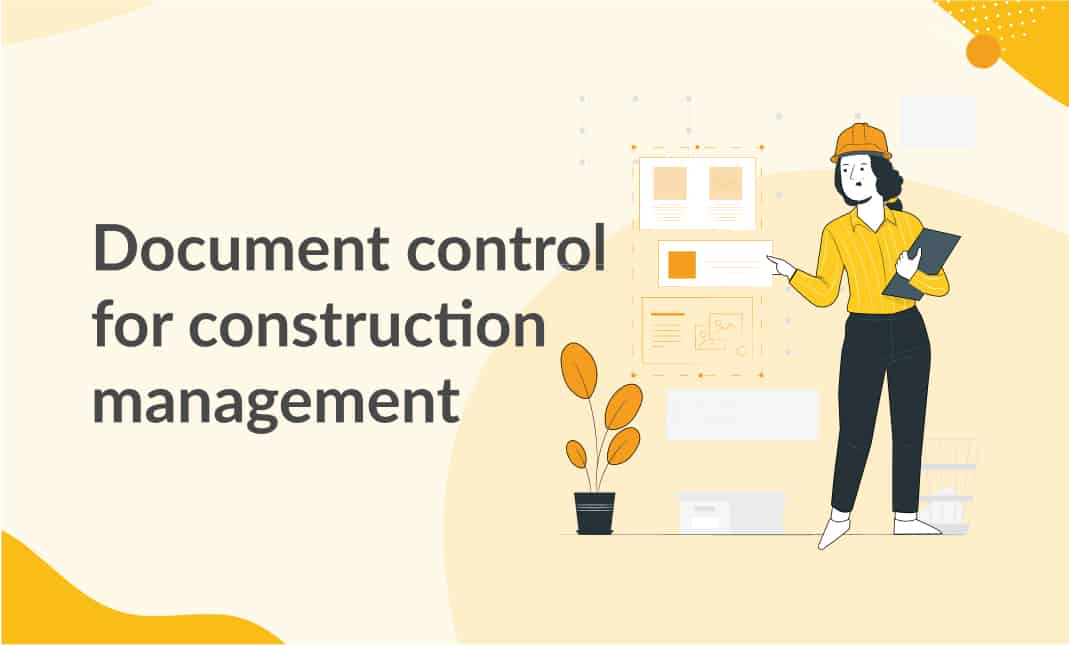Structure Better Projects: The Role of Construction Document Management in Success
Structure Better Projects: The Role of Construction Document Management in Success
Blog Article
Optimizing Project Partnership: Architect's Ideal Practices in Building Paper Management
In the detailed world of building jobs, the reliable administration of construction papers stands as a cornerstone for success. In the middle of this intricacy lies a crucial question: exactly how can architects streamline cooperation processes to boost task end results?
Leveraging Cloud-Based Systems
Leveraging cloud-based platforms is a basic strategy for modern-day designers in enhancing construction file administration processes. By transitioning from conventional paper-based systems to cloud options, engineers can simplify cooperation, improve record ease of access, and boost total job performance. Cloud-based platforms use engineers the capability to shop, share, and upgrade building records in real-time, making certain that all staff member have accessibility to one of the most present details no matter their place. This availability promotes seamless interaction and coordination among project stakeholders, leading to less errors and delays in the building and construction procedure.
In addition, cloud-based platforms give a safe and secure setting for saving delicate job info, providing file encryption, regular back-ups, and individual permission settings to secure information honesty. Architects can also gain from the scalability of cloud solutions, enabling them to readjust storage capability and capability based upon project requirements. In general, leveraging cloud-based systems equips architects to maximize their building document monitoring procedures, driving better cooperation, efficiency, and success in their jobs.
Executing Version Control Solution
Having developed the advantages of cloud-based platforms in building and construction record monitoring, designers can now enhance their file control procedures by carrying out Version Control Equipment. Variation Control Solution (VCS) are crucial tools that track changes in papers, guaranteeing that team members are always functioning with the current and most precise information. By applying VCS, engineers can keep a centralized repository where all job records are stored, making it possible for smooth collaboration while decreasing the danger of mistakes and variation disputes.
One trick advantage of Version Control Solution is the capability to track the total history of paper modifications, permitting users to return to previous variations if required (construction document management). This feature is specifically important in building and construction jobs where style models and modifications prevail. In addition, VCS facilitates much better interaction among staff member by giving a clear audit trail of that made particular modifications and when they were made. This transparency not just improves accountability yet also aids in settling disagreements or discrepancies that might develop during the job lifecycle.
Developing Interaction Methods
To ensure reliable and efficient job sychronisation, engineers have to establish clear and robust interaction methods within their building and construction record administration procedures. Interaction methods define the techniques, frequency, and channels where employee exchange info, updates, and responses. One necessary element of establishing these protocols is determining a centralized interaction system where all project-related conversations and record sharing can happen. This system can be a project management software application, e-mail threads, or cloud-based storage space solutions. By establishing guidelines on just how info is distributed and exactly how team participants more communicate with each other, designers can streamline the circulation of data and protect against miscommunications or hold-ups in the construction procedure.
Moreover, communication protocols must also consist of standards on exactly how to take care of conflicts, modification orders, and urgent problems that may emerge throughout the job lifecycle. Establishing an organized method to interaction ensures that all stakeholders are on the exact same page, advertises openness, and eventually adds to the successful conclusion of the building job.
Using BIM Software for Control
BIM software application plays a critical duty in boosting coordination amongst task employee in the construction sector. Building Info Modeling (BIM) facilitates collaboration by supplying a central system where architects, designers, specialists, and other stakeholders can interact in a worked with manner. Through BIM software, project individuals can access and upgrade a common version which contains thorough info concerning the structure design, building components, and job schedules.

Moreover, BIM software enables real-time collaboration and interaction among employee, despite their physical area. With cloud-based BIM platforms, task stakeholders can access the most recent job information, track adjustments, and make educated choices immediately. On the whole, leveraging BIM software application for sychronisation enhances task efficiency, efficiency, and inevitably leads to check successful job outcomes.
Ensuring Data Safety and Compliance
In the realm of construction paper monitoring, safeguarding information integrity and making sure regulative conformity are extremely important factors to consider for engineers and other project stakeholders. Designers must carry out durable safety steps to secure delicate project details from unauthorized access or breaches.

Conclusion
Finally, architects can optimize task cooperation in construction file monitoring by leveraging cloud-based systems, carrying out variation control systems, developing interaction procedures, using BIM software for sychronisation, and making certain information protection and compliance. These finest methods aid streamline the building and construction procedure, boost interaction amongst job stakeholders, try this out and improve effectiveness in task distribution. By adhering to these guidelines, designers can efficiently take care of building files and facilitate successful project results.
Via BIM software application, project participants can access and upgrade a shared design that includes comprehensive information concerning the building layout, building and construction components, and task routines.
With cloud-based BIM platforms, task stakeholders can access the latest job information, track adjustments, and make educated decisions quickly - construction document management. Generally, leveraging BIM software for coordination enhances job effectiveness, performance, and ultimately leads to effective task results
In final thought, architects can enhance project collaboration in construction paper monitoring by leveraging cloud-based systems, applying version control systems, establishing communication procedures, using BIM software for coordination, and ensuring data safety and security and conformity. These best techniques help streamline the building procedure, improve interaction among job stakeholders, and improve efficiency in job distribution.
Report this page